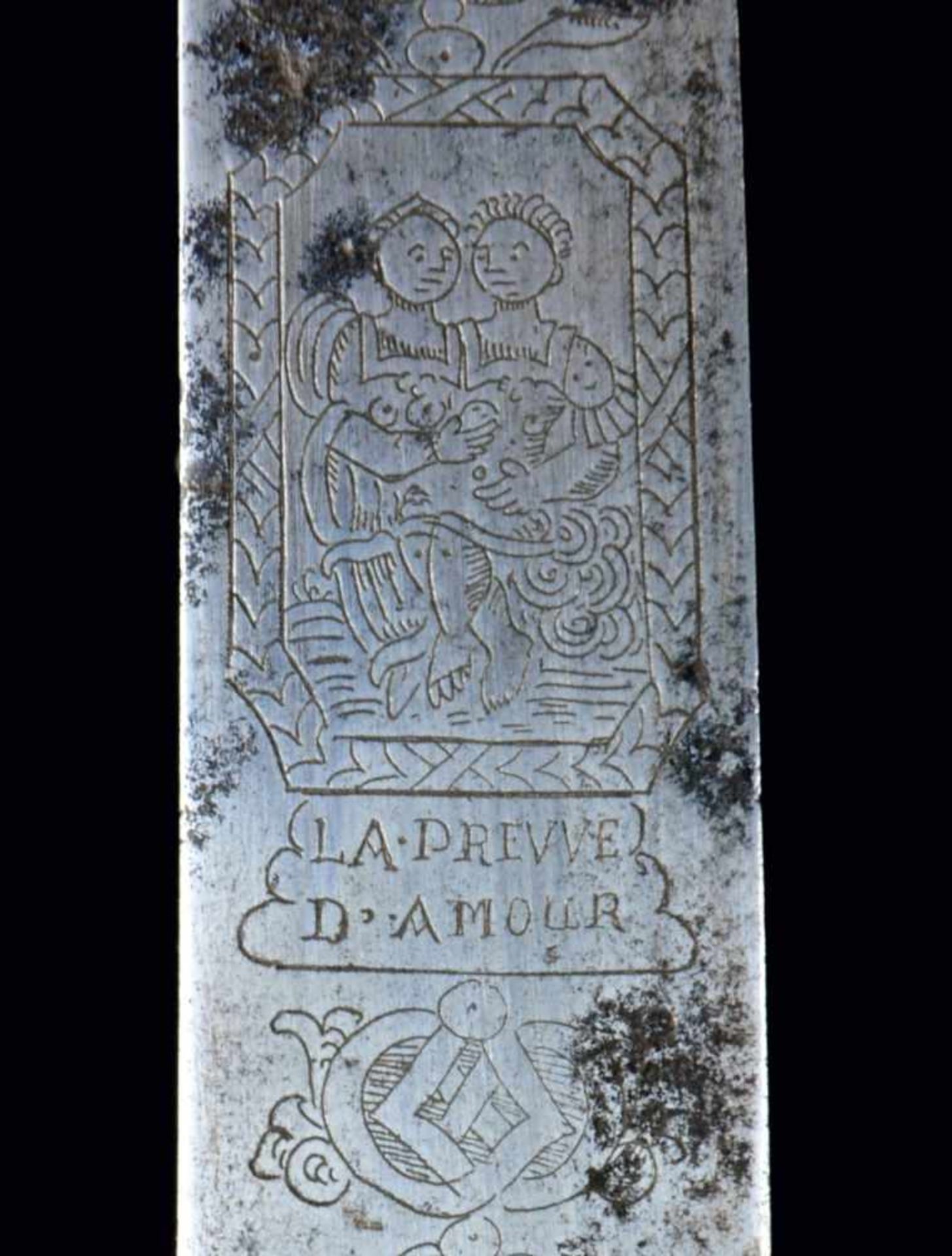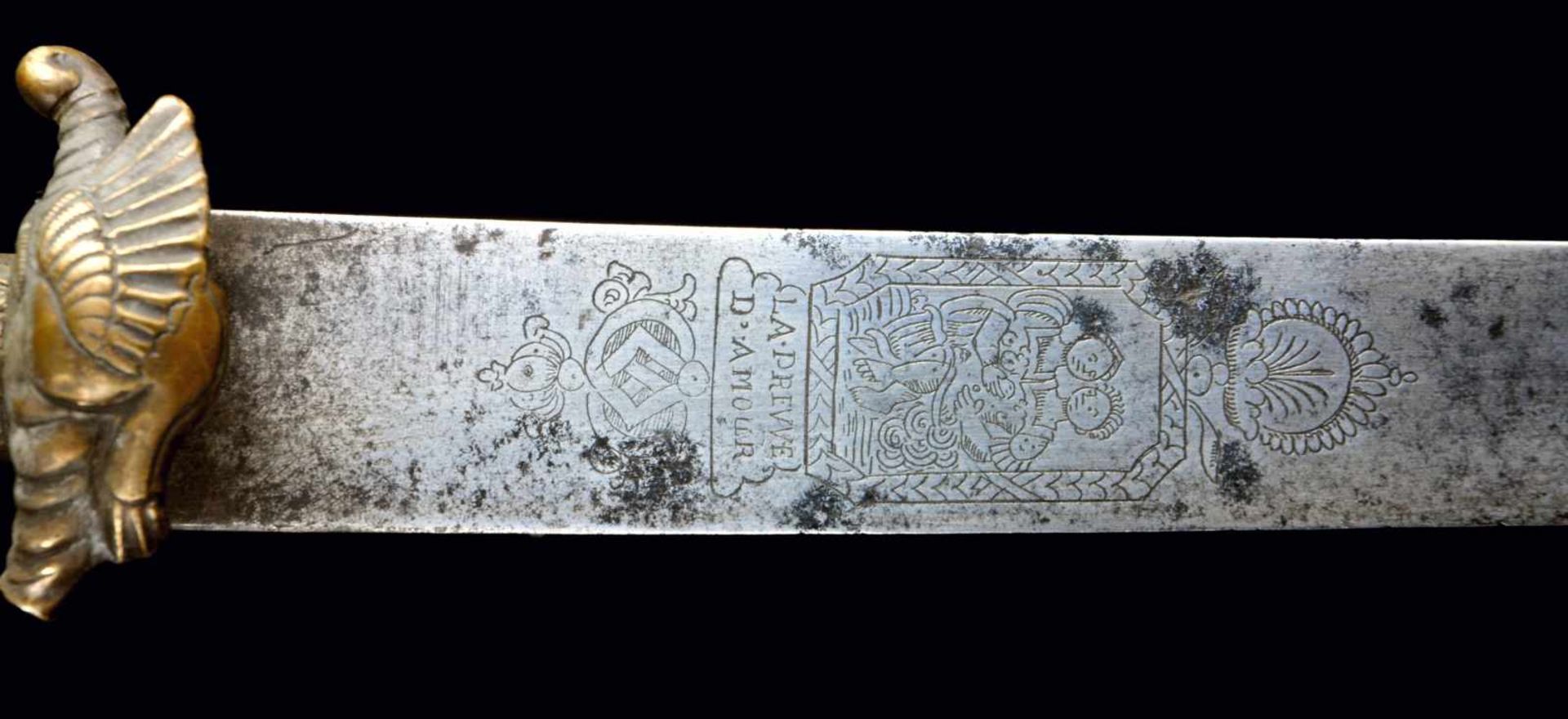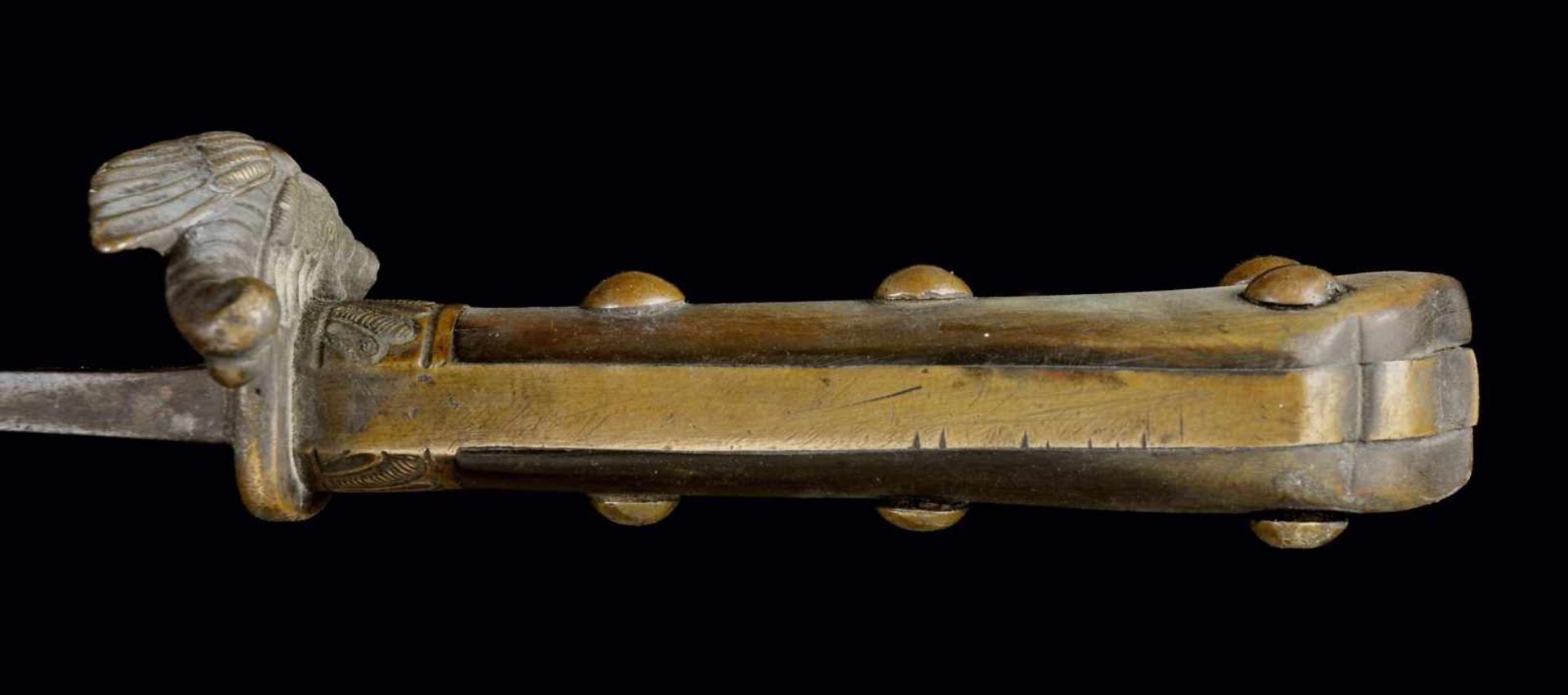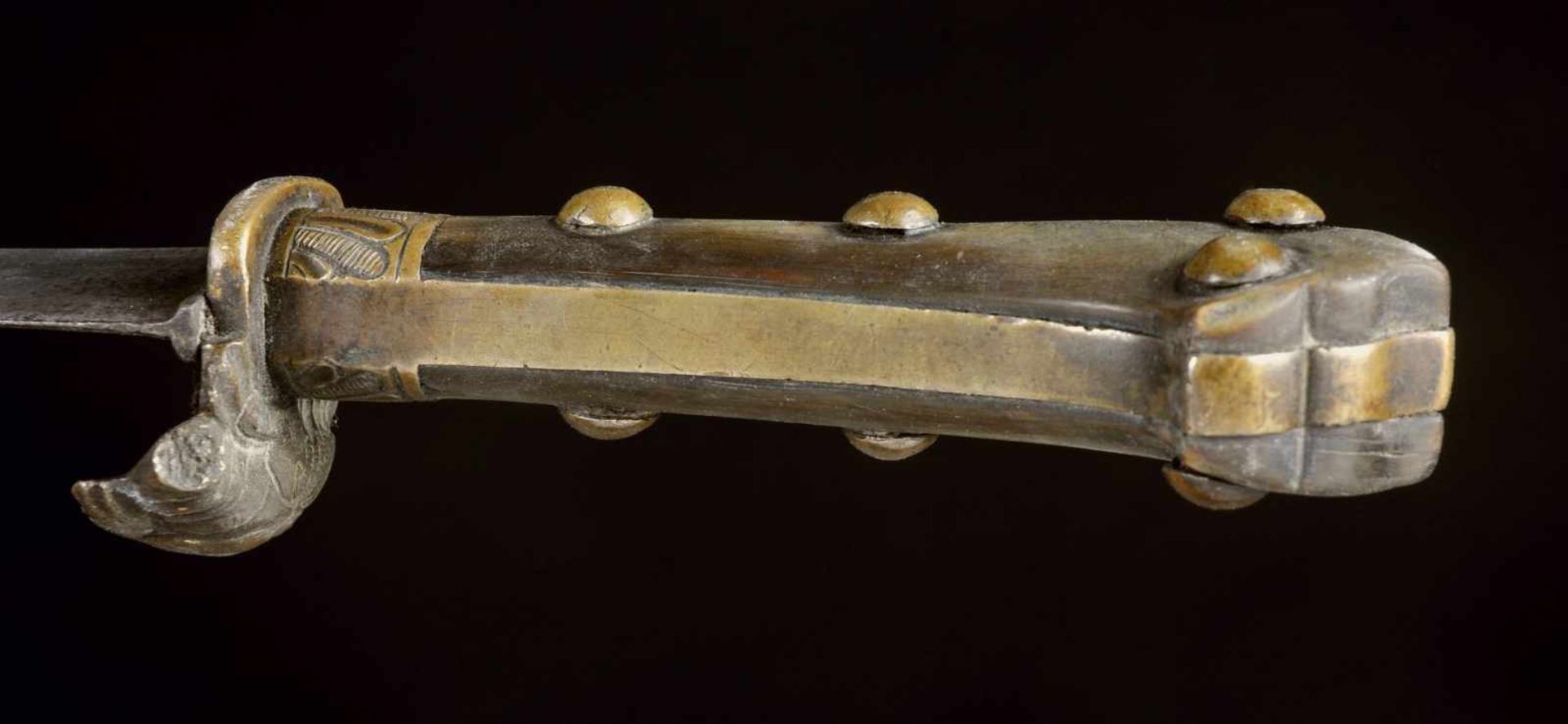42
RARE PANDUR STYLE HUNTING DAGGER WITH ENGRAVED BLADE AND KARABELA HILT, WESTERN EUROPE, MIDDLE
1/9
Das Auktionshaus hat für dieses Los keine Ergebnisse veröffentlicht
Wien
Beschreibung
RARE PANDUR STYLE HUNTING DAGGER WITH ENGRAVED BLADE AND KARABELA HILT, WESTERN EUROPE, MIDDLE 18TH CENTURY.Origin: Germany, France (?), about 1750.KARABELA – type of swords named after eagle-shaped hilt. Became popular in Poland and Turkey in 17th c., but also in neighboring countries for export to Poland and for the local market. Hunting swords with a Karabela hilt were very fashionable during the 18th century, not only amongst Polish nobility, but also in France, Hungary, Austria and Russia. These types of swords were also a very popular weapon of American Colonists of continental European background and were used during the American revolutionary war and carried by the soldiers of the American Revolutionary Army.Single-edged, slightly curved blade with false edge and back point. On both faces decorated - engraved scene with girl and boy sitting together, picture in rectangular frame, below inscription in French: LA PREUVE D'AMOUR (proof of love), decor in typical 18th c. manner.Cross guard made of hand-chased and engraved bronze in the shape of the bird (head missing), shows a nice dark patina. Chiseled and engraved bronze ring between grip plates and cross guard is in one piece with tape between grip plates. Light horn grip plates are fixed to the blade with four steel rivets ended with bronze hemispheres.Scabbard missing.Total length – 62,5 cm, blade’s length 50,8 cm, width – 33 mm, thickness – 7 mm.CONDITION REPORT. Overall very good condition. Blade with minor traces of corrosion. Hilt in very good condition with nice, natural patina on metal parts. Part of the cross guard missing. Half of the leather spacer between hilt and blade survived. Scabbard missing.BIBLIOGRAPHY:"Kardok" by Jozsef Lugosi & Ferenc Temesvari Figure: 150-153.“Battle Weapons of the American Revolution”,” George Neumann, page 335. ”Swords & Blades of the American Revolution”, George Neumann, page 93.Keywords: sword, saber, sabre, Sabel, Schwert, szabla, szablya, glaive, Dolch, hanger, сабля
Auktionsdetails
Versand
AGB & Wichtige Informationen
Stellen Sie dem Verkäufer eine Frage
RARE PANDUR STYLE HUNTING DAGGER WITH ENGRAVED BLADE AND KARABELA HILT, WESTERN EUROPE, MIDDLE 18TH CENTURY.Origin: Germany, France (?), about 1750.KARABELA – type of swords named after eagle-shaped hilt. Became popular in Poland and Turkey in 17th c., but also in neighboring countries for export to Poland and for the local market. Hunting swords with a Karabela hilt were very fashionable during the 18th century, not only amongst Polish nobility, but also in France, Hungary, Austria and Russia. These types of swords were also a very popular weapon of American Colonists of continental European background and were used during the American revolutionary war and carried by the soldiers of the American Revolutionary Army.Single-edged, slightly curved blade with false edge and back point. On both faces decorated - engraved scene with girl and boy sitting together, picture in rectangular frame, below inscription in French: LA PREUVE D'AMOUR (proof of love), decor in typical 18th c. manner.Cross guard made of hand-chased and engraved bronze in the shape of the bird (head missing), shows a nice dark patina. Chiseled and engraved bronze ring between grip plates and cross guard is in one piece with tape between grip plates. Light horn grip plates are fixed to the blade with four steel rivets ended with bronze hemispheres.Scabbard missing.Total length – 62,5 cm, blade’s length 50,8 cm, width – 33 mm, thickness – 7 mm.CONDITION REPORT. Overall very good condition. Blade with minor traces of corrosion. Hilt in very good condition with nice, natural patina on metal parts. Part of the cross guard missing. Half of the leather spacer between hilt and blade survived. Scabbard missing.BIBLIOGRAPHY:"Kardok" by Jozsef Lugosi & Ferenc Temesvari Figure: 150-153.“Battle Weapons of the American Revolution”,” George Neumann, page 335. ”Swords & Blades of the American Revolution”, George Neumann, page 93.Keywords: sword, saber, sabre, Sabel, Schwert, szabla, szablya, glaive, Dolch, hanger, сабля
Militariy Collectables
Auktionsdatum
Ort der Versteigerung
Traubengasse 2/9
Wien
1230
Austria
Für Karabela Auctions Versandinformtation bitte wählen Sie +48 695 112 291.




























